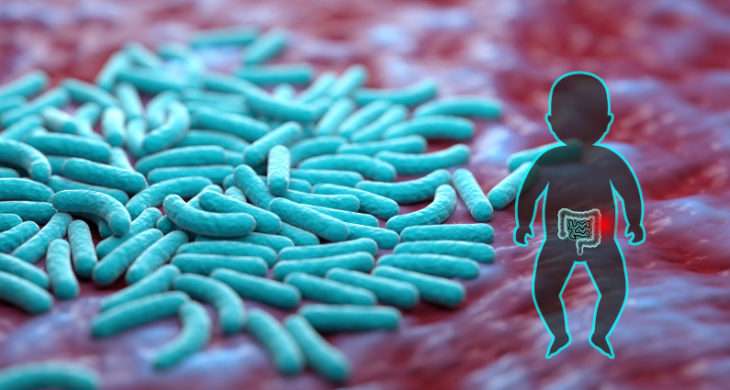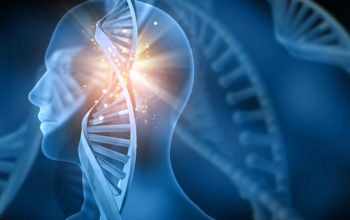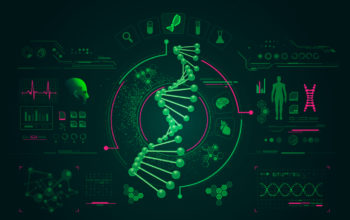
Date: 30th September 2021

Necrotising enterocolitis (NEC) is a devastating disease that affects premature infants, damaging the intestinal lining and causing death in up to a third of cases. With a poorly understood pathogenesis it is however known that activation of the gram-negative bacterial receptor Toll-like receptor 4 (TLR4) on the intestinal epithelium plays a critical role. Patients with NEC typically display gastrointestinal dysmotility before systemic disease manifests. This raises the possibility that the enteric nervous system, which is a network of enteric neurons and glia governing intestinal motility and inflammation, may be a good target for NEC therapeutics. Now, researchers have shown that loss of enteric glia led to intestinal dysmotility, overproduction of TLR4 triggered this loss, and NEC severity can be reduced by a synthetic antibiotic which inhibited TLR4 signalling and restored intestinal movement.
The precise mechanisms that lead to NEC remains elusive, and current theories highlight proinflammatory signalling in response to colonising microbes may play a role in its development. TLR4 plays a critical role in NEC, inducing intestinal epithelial cell death, recruiting proinflammatory leukocytes, allowing the development of intestinal ischemia. Symptoms of intestinal dysmotility such as distended abdomen and intolerances to foods, have been associated with NEC, but have traditionally been considered a consequence rather than a cause.
Now, researchers at Johns Hopkins Medicine, US, led by David Hackam and Chhinder Sodhi, have demonstrated that intestinal dysmotility is a consequence of TLR4-influenced loss of enteric glia, and is a critical factor in the development of NEC. Mechanistically, brain-derived neurotrophic factor (BDNF) released from enteric glia restrained TLR4 signalling on the intestine to prevent NEC. Furthermore, targeting enhancement of BDNF with a synthetic antibiotic restored motility, and prevented NEC in mice.
To start, the team linked impaired gastrointestinal motility in the development of NEC from abdominal radiographs of infants with or without the condition. This phenomenon was also seen in observed in other animals with NEC, and was accompanied with enteric glia loss which occurred early in its development, preceding intestinal inflammation and epithelial injury. Together, these data indicated that a loss of enteric glia across species preceded intestinal injury in NEC.
Next, they sought to investigate whether impaired gastrointestinal motility could be a predisposing factor in the development of NEC in mice. Here, administration of prokinetic agents reduced the severity of NEC in mice, whereas in contrast mice lacking enteric glia show increased NEC severity, together suggesting impaired motility could indeed drive NEC development. Furthermore, TLR4 activation on the enteric glia lead to glial loss, and this loss was required for the development of NEC.
But what factors were involved in TLFR4 mediated enteric glial loss? To answer this the team focused on BDNF, a member of the neurotrophin family of growth factors that is constitutively released from the enteric glia and that has anti-inflammatory properties. In mice and infants with NEC, BDNF expression was reduced in the intestinal tissue. Furthermore, recombinant BDNF inhibited TLR4 signalling in vivo, and oral administration of BDNF reduced the severity of NEC and improved intestinal motility. Conversely, DNF-deficient strains of mice developed worse NEC, and showed impaired intestinal motility compared to wild type mice. Replenishing BDNF to glia-deficient mice was able to restore motility and reduced the development of NEC, suggesting reduction in BDNF release accounted for the critical role that enteric glia loss plays in the pathogenesis of experimental NEC.
Finally, the team wanted to identify therapeutic agents for NEC, screening several libraries they found a compound called J11, a synthetic antibiotic, that could induce the release of BDNF from cultured enteric glia. When administered to wild type mice, J11treatment significantly reduced the severity of NEC and improved small intestinal motility . In contrast, as expected this improvement was not observed in DNF-deficient mice. Initial experiments to determine translatability of the drug to humans appeared successful, as J11 induced the release of BDNF from the human intestine ex vivo and reduced inflammation.
Conclusions and future applications
The team here have provided evidence that intestinal dysmotility, as a consequence of TLR4-mediated loss of the enteric glia, is a critical factor in NEC pathogenesis in preclinical models and likely has a similar role in humans. They have identified a potential translatable therapeutic for NEC, J11, which enhanced the release of BDNF from enteric glia, reversed dysmobility, and attenuated NEC severity.
Looking to the future the team will be evaluating any off-target effects of J11 and will be performing a full toxicity profile. Furthermore, additional studies will be necessary to elucidate the precise mechanism of action of J11. They hypothesise that J11 or perhaps BDNF administration may play a role in preventing other severe conditions in infants such as Hirschsprung’s disease–associated enterocolitis.
Early warning systems and methods to detect these types of diseases is crucial for early diagnosis and rapid treatment. By linking impaired gastrointestinal motility in the development of NEC the team here have opened the doors for an early diagnosis. Other conditions such as sepsis, which is a differential diagnosis for NEC, are starting to benefit also from AI-based early warning systems, where suspected patients are flagged and receive antibiotics significantly faster than standard care patients. A similar approach to NEC might also be beneficial. Furthermore, the work here has opened the door to the possibility of a new target for NEC and the future generation of enteric glia therapies for this disorder.
For more information please see the press release at Hopkins Medicine
Kovler, M.L., Salazar, A.J.G., Fulton, W.B., Lu, P., Yamaguchi, Y., Zhou, Q., Sampah, M., Ishiyama, A., Prindle, T., Wang, S., et al. (2021). Toll-like receptor 4–mediated enteric glia loss is critical for the development of necrotizing enterocolitis. Science Translational Medicine 13, eabg3459.
https://doi.org/10.1126/scitranslmed.abg3459


